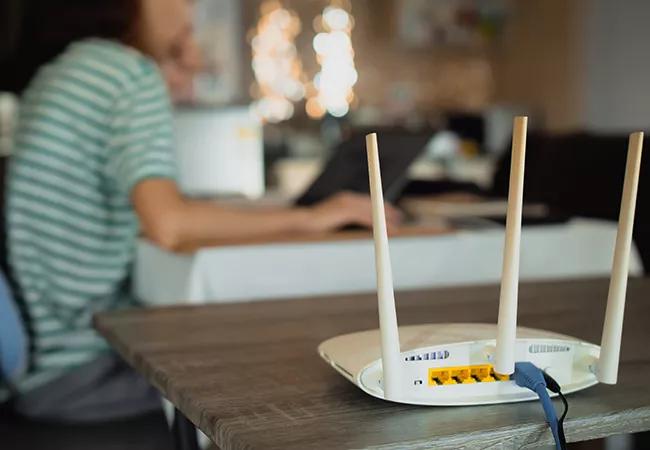Rates of CR eligibility high and internet access low among older patients in rural areas

Use of telehealth has increased since the COVID-19 pandemic, but many patients who could benefit from telehealth for delivery of cardiac rehabilitation (CR) lack the broadband-quality internet necessary to access the technology.
Advertisement
Cleveland Clinic is a non-profit academic medical center. Advertising on our site helps support our mission. We do not endorse non-Cleveland Clinic products or services. Policy
So concludes a cross-sectional observational study by Cleveland Clinic researchers recently published in the American Journal of Preventive Cardiology. The findings are based on an analysis of responses to the U.S. Census Bureau American Community Survey from U.S. households with adults aged 65 years or older.
“Our data indicate that telehealth-based cardiac rehabilitation delivery currently is not a pragmatic option for many Medicare fee-for-service beneficiaries,” says first author Erik Van Iterson, PhD, MS, Director of Cardiac Rehabilitation at Cleveland Clinic. “That could have a negative impact on progress toward meeting the cardiac rehabilitation utilization goals in Million Hearts® 2027,” a national initiative led by the Centers for Disease Control and Prevention and the Centers for Medicare & Medicaid Services.
Increasing use of CR to prevent deaths from cardiovascular disease is one of the aims of Million Hearts 2027. Studies show that although CR can reduce the risk of cardiac death, all-cause death and hospital readmissions, fewer than one in three eligible patients participates.
“Our findings in this study underscore the challenges represented by patterns of low levels of industry-standard internet access and high levels of need for cardiac rehabilitation services in certain parts of the country, particularly rural and impoverished areas that lack center-based rehabilitation services,” says study co-author Luke Laffin, MD, staff cardiologist in Cleveland Clinic’s Section of Preventive Cardiology and Rehabilitation.
Advertisement
For the study, American Community Survey participants were considered to have no fixed-terrestrial broadband internet access if they said they had no home internet-connected computer or smart device or their only internet access was dial-up service. CDC data from 2017 to 2018 were used to estimate CR eligibility rates and center-based utilization of CR.
The goal of the study was to describe national, geographic and urban/rural patterns of fixed-terrestrial broadband internet access, CR eligibility rates and center-based CR utilization throughout the U.S.
The authors performed general linear modeling to evaluate differences between geographic regions and urban/rural areas for dependent variables of interest. Incident rate ratios were used to characterize both univariable and multivariable associations between CR metrics, fixed-terrestrial broadband internet access, and geographic region or urban/rural area variables.
For the study, American Community Survey participants were considered to have no fixed-terrestrial broadband internet access if they said they had no home internet-connected computer or smart device or their only internet access was dial-up service. CDC data from 2017 to 2018 were used to estimate CR eligibility rates and center-based utilization of CR.
The goal of the study was to describe national, geographic and urban/rural patterns of fixed-terrestrial broadband internet access, CR eligibility rates and center-based CR utilization throughout the U.S.
The authors performed general linear modeling to evaluate differences between geographic regions and urban/rural areas for dependent variables of interest. Incident rate ratios were used to characterize both univariable and multivariable associations between CR metrics, fixed-terrestrial broadband internet access, and geographic region or urban/rural area variables.
Advertisement
The overlap in patterns of broadband internet access in the home with observed CR eligibility rates points to potential area-wide gaps in the availability of home-based internet-dependent access to care, the researchers note. They add that this may translate into communitywide public health concerns relating to further widening of existing differences in healthcare access and availability. In the case of CR, inability to access industry-standard internet service could be preventing patients from receiving non-center-based heart care, particularly if they are living below the poverty threshold and in under-resourced communities.
“For the majority of U.S. patients eligible for cardiac rehabilitation, relying on cellular-based broadband internet access for telehealth isn’t realistic,” observes co-author Leslie Cho, MD, Co-Section Head of Preventive Cardiology and Rehabilitation at Cleveland Clinic. “What is needed are committed and actionable public health policy initiatives to close the digital divide and give communities the physical and financial resources to make broadband internet accessible in the home for all.”
Advertisement
Advertisement

Digital “tripwires” detect and respond to malicious activity, boosting cybersecurity maturity

Program participation correlates with reduced use of opioids, X-rays and ED visits

Confidential forums help address barriers to the timely escalation of care

Thoughtful collaboration, data-driven decisions and effective change management lead to significant savings

A multi-pronged strategy for tackling cancer access problems

Advanced connectivity and technologies build on a foundation of teleneurology leadership

Approximately 500 million people globally are experiencing 'period poverty'

Lutheran Hospital team brings emerging treatments to community setting